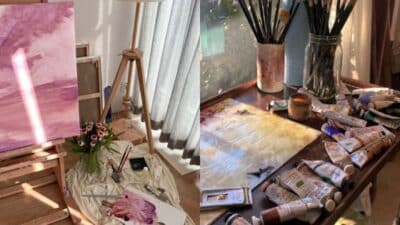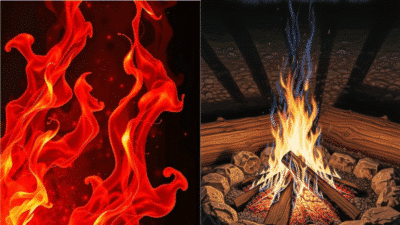As the days grow shorter and a crisp chill fills the air, there’s a unique magic that descends with winter. It’s a season that invites us to slow down, find comfort in warmth, and perhaps, discover new ways to express ourselves. While the world outside might be painted in cool blues and stark whites, the indoors can become a vibrant canvas for creativity. If you’ve ever found yourself gazing out at a snowy landscape, sipping a warm drink, and feeling a gentle tug towards artistic expression, then you’re in the perfect spot. Winter isn’t just a time for hibernation; it’s an incredible opportunity to cozy up with your art supplies and let your imagination flourish.
Drawing during winter offers a special kind of solace. It’s an activity that can be enjoyed alone in quiet reflection, or shared with loved ones, creating cherished memories. Forget the pressure of perfection; this is about embracing the process, finding joy in creation, and capturing the unique spirit of the season. Whether you’re a seasoned artist or just looking for a fun new hobby to try, winter provides an endless wellspring of inspiration. From frosted windowpanes to steaming mugs of cocoa, from festive lights to tranquil snowy forests, the possibilities are as vast as a freshly fallen blanket of snow. So, grab your sketchbook, sharpen your pencils, and let’s dive into some delightful winter drawing ideas that are sure to spark your creative fire.
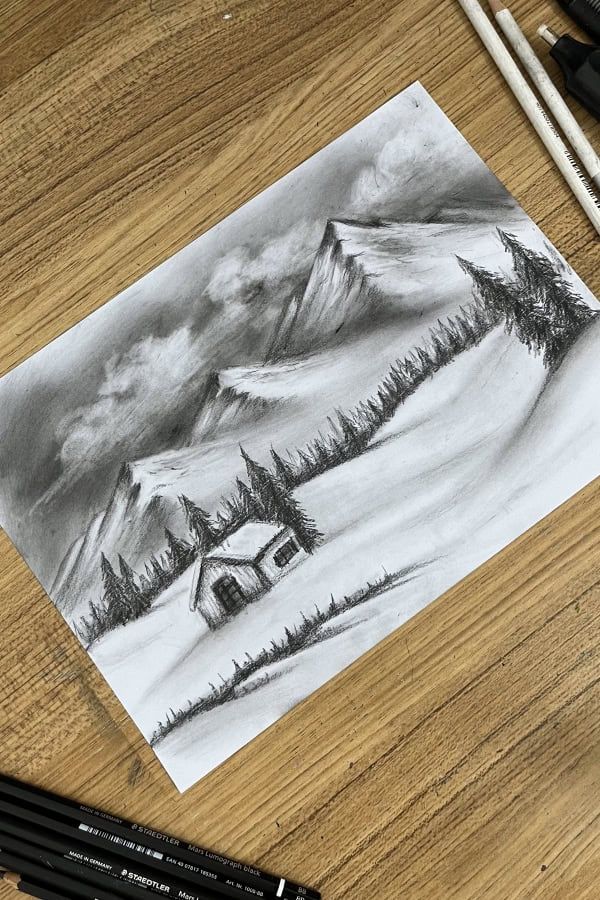

Why Winter is the Perfect Season for Drawing
There’s something inherently artistic about winter. The way light hits the snow, the intricate patterns of ice, the contrast of warm interiors against the cold outside – it all begs to be captured. This season naturally encourages a more contemplative and introspective mood, making it ideal for artistic pursuits.
A Time for Indoor Creativity
With colder temperatures keeping us indoors, winter frees up time that might otherwise be spent on outdoor activities. This gives us the perfect excuse to settle down with our art supplies. Instead of feeling confined, view your cozy indoor space as a sanctuary for creativity. Imagine a comfy blanket, a cup of tea, and your favorite drawing tools – pure bliss! This dedicated indoor time can lead to focused, uninterrupted drawing sessions that might be harder to find during other, busier seasons. It’s also a fantastic way to combat the winter blues, infusing your days with color and purpose.
Endless Visual Inspiration
Winter’s unique aesthetic provides a rich palette for artists. Think about the stark beauty of bare tree branches outlined against a grey sky, the sparkle of frost on evergreen needles, or the gentle glow of streetlights reflecting on wet pavement. Even everyday objects take on a new charm: woolly scarves, knitted mittens, crackling fireplaces, and steaming mugs become fascinating subjects. The textures are varied, the light is often softer and more atmospheric, and the overall mood is ripe for interpretation. It forces us to observe details we might otherwise overlook, enhancing our observational skills and deepening our connection to the world around us.
Mindfulness and Relaxation
Engaging in art, especially drawing, is a powerful form of mindfulness. It requires focus and concentration, drawing your attention to the present moment and away from daily stresses. The repetitive motion of sketching, shading, or coloring can be incredibly meditative. During winter, when life often feels a bit slower, dedicating time to drawing can become a vital part of your self-care routine. It’s an opportunity to unwind, express emotions, and simply enjoy the therapeutic benefits of creation. Many artists find that spending time with a sketchbook helps them process thoughts and feelings, leading to a sense of calm and well-being.


Getting Started: Your Winter Drawing Toolkit
Before you dive into those fantastic winter scenes, make sure you have the right tools at hand. You don’t need a huge, expensive art studio to get started; a few basic supplies can open up a world of possibilities.
Essential Art Supplies
For most drawing ideas, you’ll want some foundational items:
- Sketchbook: Opt for one with decent paper quality that can handle different mediums without bleeding through. A mixed-media sketchbook is a versatile choice.
- Pencils: A set of graphite pencils with varying hardness (e.g., 2H, HB, 2B, 4B, 6B) will allow you to create a range of tones and details.
- Eraser: A kneaded eraser is excellent for lifting graphite without smudging, and a precise stick eraser can clean up small areas.
- Pens/Markers: Fineliner pens (like Micron Pigma) are great for outlines and details. Brush pens can add expressive lines. Alcohol markers can bring vibrant color.
- Coloring Mediums: Consider colored pencils for detailed work, pastels for soft, blended effects, or watercolors for ethereal washes. Even a simple set of crayons can be surprisingly effective for a casual, playful style.
- Reference Materials: Photos, magazines, or even real-life objects from your cozy space can serve as inspiration.
Setting Up Your Creative Corner
Creating a dedicated space, no matter how small, can significantly boost your creative flow. Find a spot in your home with good lighting – natural light is always best, but a well-placed lamp works wonders for darker winter days. Make sure your space is comfortable and free from distractions. A comfy chair, a flat surface, and everything within easy reach will make your drawing sessions more enjoyable. Think about adding elements that make the space truly yours, perhaps a warm blanket, a scented candle, or some inspiring decor. For ideas on creating the perfect nook, check out this guide on how to create a cozy corner for yourself. A well-organized and inviting workspace will make it easier to start and continue your artistic journey throughout the winter.
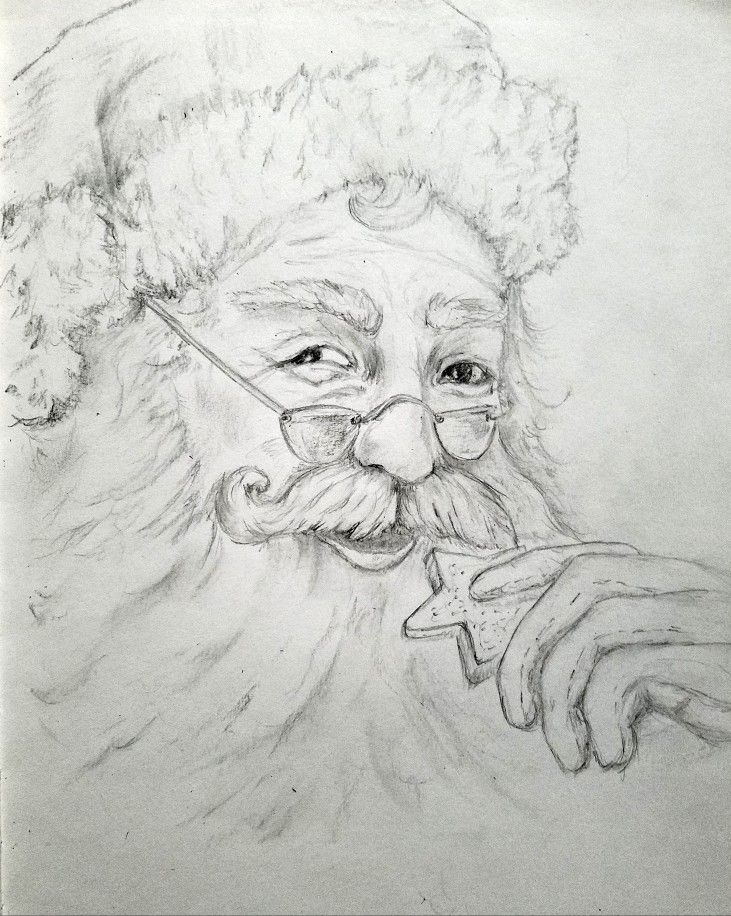
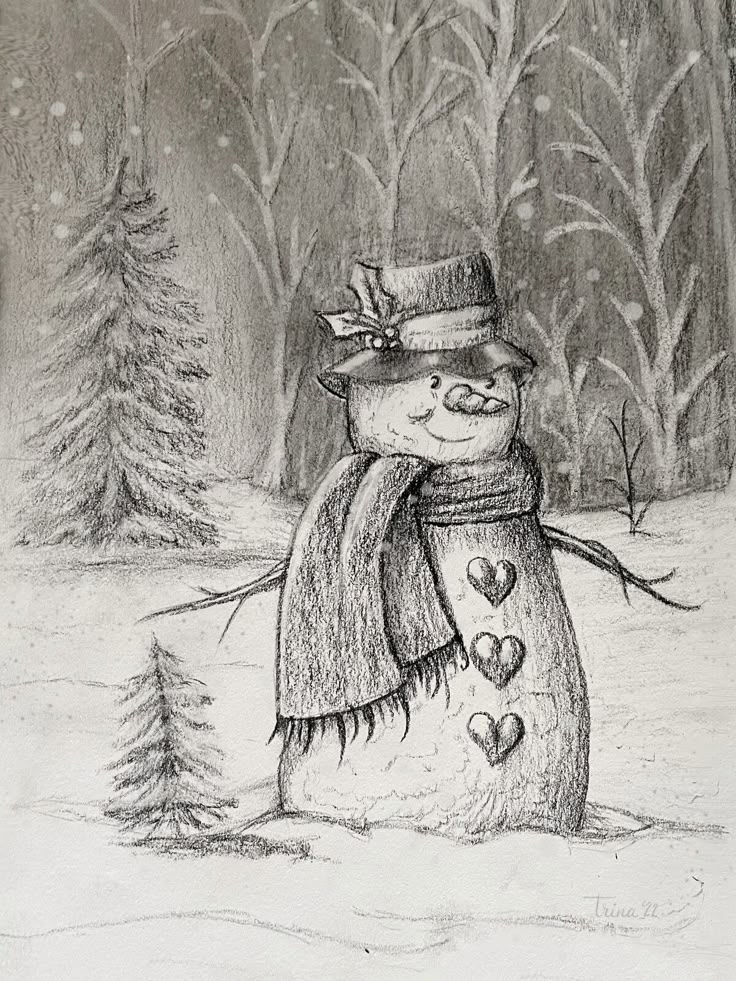
Warm-Up Exercises to Get Your Creativity Flowing
Don’t jump straight into a masterpiece. A few warm-up exercises can loosen your hand and mind:
- Scribble Page: Just draw random lines and shapes on a scrap piece of paper. Don’t think, just draw.
- Shape Practice: Draw basic shapes (circles, squares, triangles) repeatedly to get your hand-eye coordination going.
- Gesture Drawing: Quickly sketch objects or figures, focusing on their overall form and movement rather than details.
- Blind Contour Drawing: Draw an object without looking at your paper, only at the object. This trains your eye to really see.
Embracing the Season: Classic Winter Scenes
Some drawing ideas are timeless winter staples for a reason. They perfectly encapsulate the feeling of the season and offer fantastic opportunities to practice different techniques.
Snowy Landscapes and Forests
The quintessential winter scene! Drawing snowy landscapes allows you to play with light, shadow, and texture.
- Snow-Covered Trees: Focus on the weight of the snow on branches. How does it bend them? What kind of shadows does it cast? Experiment with different types of trees – evergreens dusted with snow, or deciduous trees with their intricate, bare branches.
- Winter Mountains: Capture the majestic scale of snow-capped peaks. Use soft blues and grays for distant mountains and starker whites for closer elements.
- Frozen Lakes and Rivers: The reflective quality of ice, the delicate cracks, and the subtle color shifts make for a beautiful challenge.
- Footprints in the Snow: A simple detail that adds a narrative element and a sense of scale.
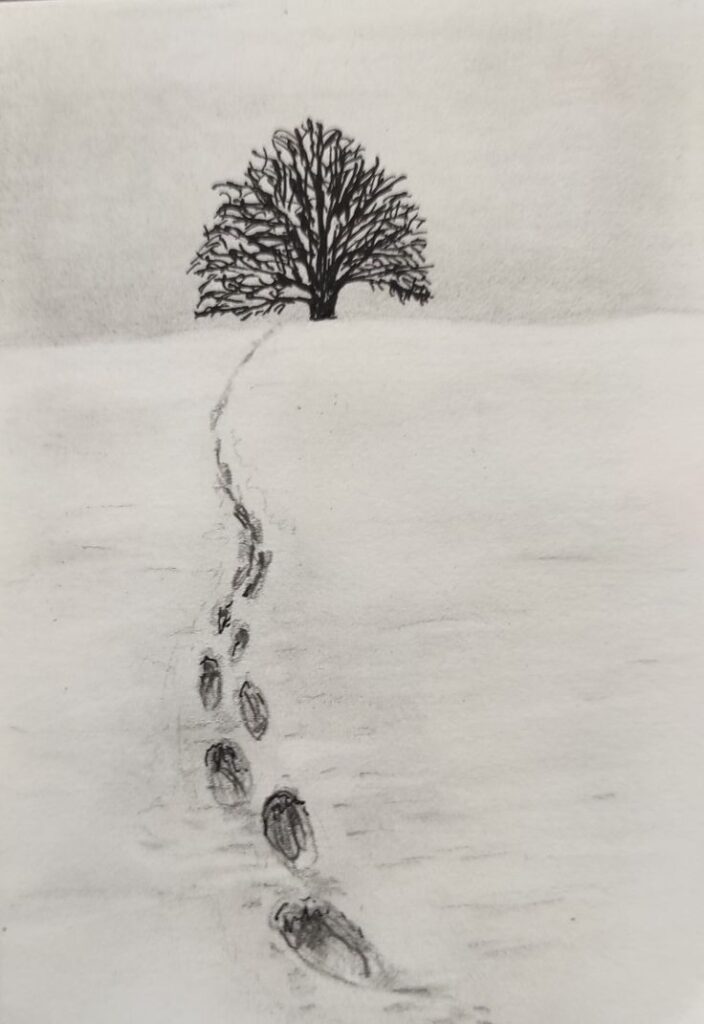

Cozy Interiors and Hygge Moments
Shift your focus indoors to capture the warmth and comfort of a winter haven. This is where the Danish concept of “hygge” (coziness and comfortable conviviality) truly shines.
- Fireplace Scene: A crackling fire with glowing embers, logs stacked nearby, and perhaps a mantle adorned with festive decorations. This is a great way to practice drawing light sources and warm glows.
- Window View: Draw your window looking out at a snowy scene, perhaps with condensation or frost on the glass, framing the world outside. The contrast between the warm interior and the cold exterior can be very striking.
- Reading Nook: A comfortable armchair with a blanket, a book, and a warm cup. Focus on the textures of the fabric, the steam from the mug, and the soft lighting. Consider how textiles, curtains, pillows, and carpets contribute to the overall cozy vibe.
- Still Life with Winter Elements: Arrange a few items like a knitted scarf, a pair of mittens, a pinecone, and a candle. These simple setups offer excellent practice for rendering different textures and forms.
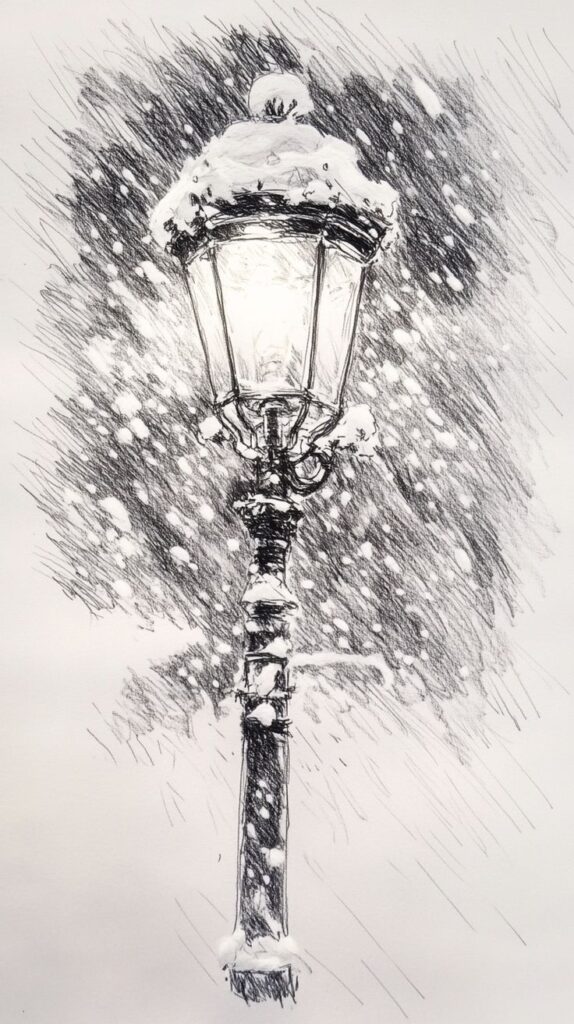

Intricate Snowflakes and Ice Patterns
Snowflakes are nature’s tiny masterpieces, each unique and symmetrical.
- Detailed Snowflakes: Use fine-tipped pens or pencils to draw intricate snowflake designs. You can freehand them or use a compass and ruler for perfect symmetry. Look up photos for inspiration – the variety is astonishing.
- Frosted Windowpanes: Observe the organic, feathery patterns ice creates on glass. These are less about perfect symmetry and more about flowing, natural forms. Experiment with white pencils on dark paper for a striking effect.
- Ice Crystals: Get up close and personal! Draw individual ice crystals forming on twigs or leaves, showing their delicate structures.
Holiday Cheer & Festive Fun
Winter is synonymous with the holiday season, offering a wealth of cheerful and colorful drawing ideas. These can be particularly fun and light-hearted.
Christmas Ornaments and Decorations
Sparkling, colorful, and diverse, ornaments are fantastic subjects.
- Glass Baubles: Practice rendering reflections and highlights on shiny surfaces. Think about the colors reflected within the bauble itself.
- Garlands and Wreaths: Capture the texture of pine needles, berries, and ribbons.
- Fairy Lights: Experiment with drawing glowing lights and their soft, diffused illumination. This is a great exercise in atmospheric drawing.
- Gingerbread Houses: These edible architectural wonders offer a chance to draw whimsical details, candy textures, and playful decorations.
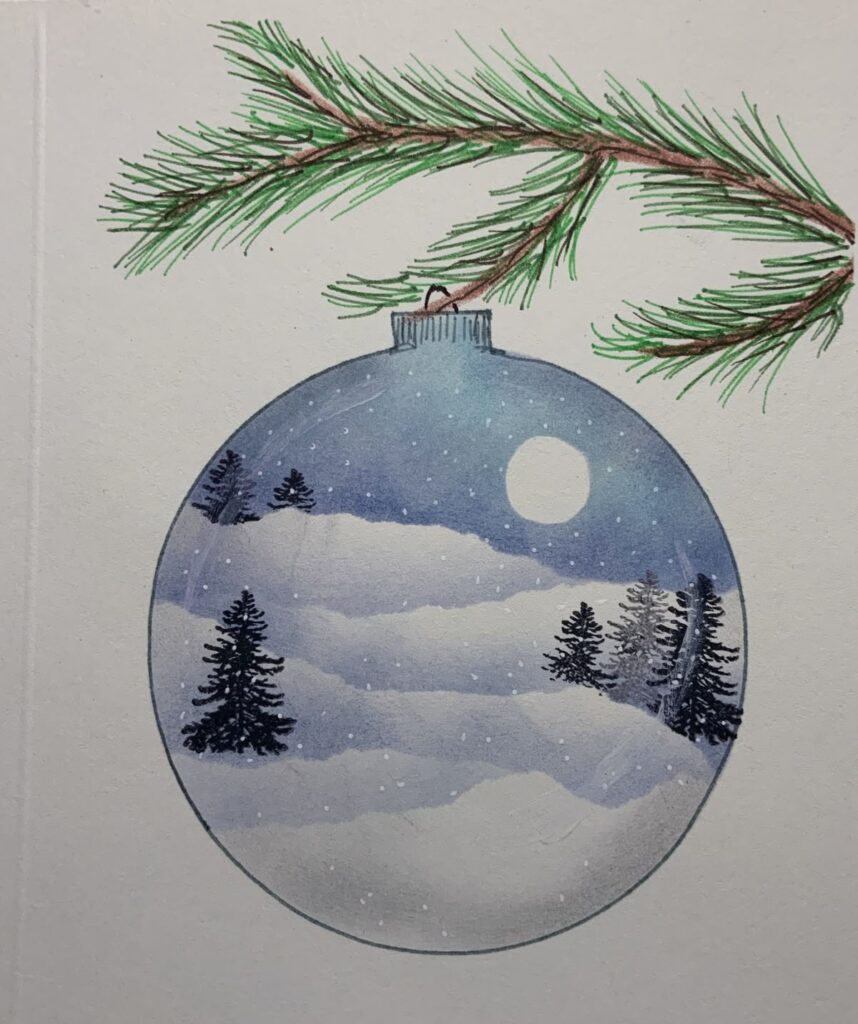

Iconic Holiday Characters and Symbols
From jolly figures to beloved animals, holiday themes are always a hit.
- Santa Claus: Practice drawing different expressions, the texture of his suit, and the twinkle in his eye.
- Reindeer and Sleighs: Focus on movement and anatomy, even in a stylized way.
- Snowmen and Snow Angels: These friendly figures are simple yet expressive. Give your snowman a personality with different hats, scarves, and facial features.
- Nutcrackers and Toy Soldiers: Their elaborate uniforms and distinct features provide excellent detail-drawing opportunities.

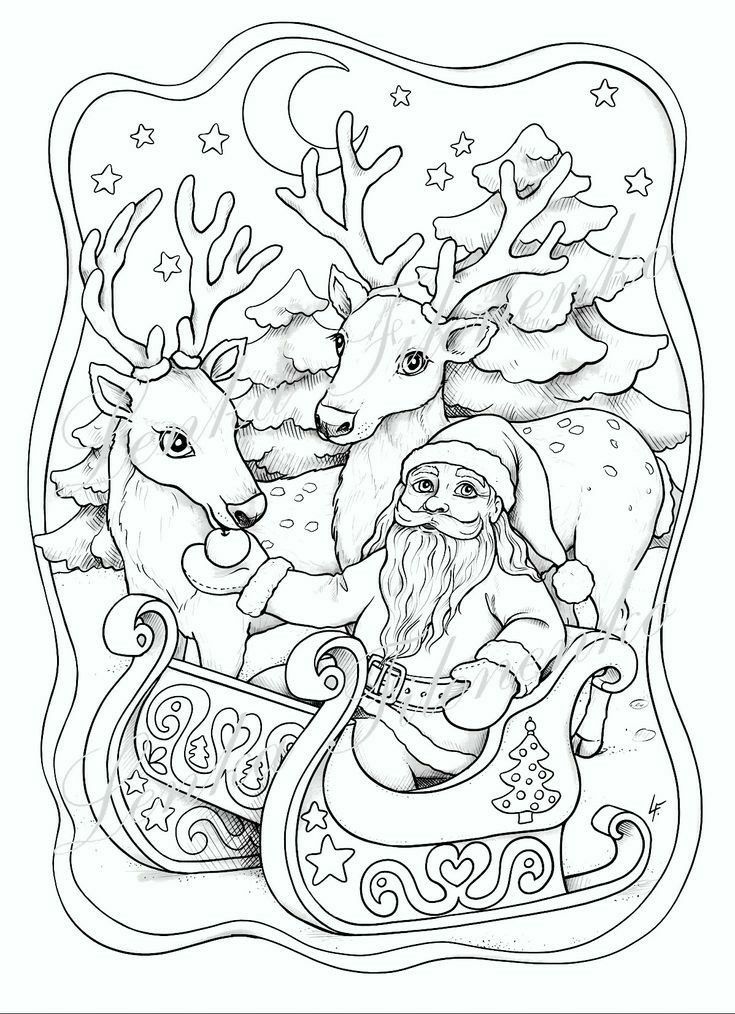
Warm Drinks and Sweet Treats
Nothing says “cozy winter” like a warm beverage and a delicious treat.
- Hot Cocoa with Marshmallows: The steam rising from the cup, the melted marshmallows, and the rich, dark liquid. This is perfect for capturing warmth and indulgence.
- Coffee or Tea: Focus on the mug, its design, and the subtle ripples on the surface of the drink.
- Holiday Cookies and Pastries: Gingerbread men, sugar cookies with icing, yule logs – these offer delightful shapes, textures, and opportunities for vibrant color.
- Candy Canes: Simple stripes, but great for practicing consistent line work and creating a festive pop of color.
Beyond the Obvious: Unique Winter Inspiration
While the classics are wonderful, don’t limit yourself! Winter can inspire a vast array of unique and imaginative art. If you’re looking for more general inspiration, remember that there are always tons of coolest drawing ideas to explore, no matter the season.
Winter Animals
Animals in their winter habitat offer compelling subjects.
- Foxes in Snow: Capture their sly expressions and bushy tails against a white backdrop.
- Owls: Their majestic gaze and feathered textures make for intricate drawings.
- Deer: Drawing deer in a snowy forest evokes a sense of peace and wild beauty.
- Polar Bears or Arctic Wolves: If you’re feeling adventurous, explore these magnificent creatures adapted to extreme cold. Focus on their thick fur and powerful forms.
- Robins or Cardinals: A splash of vibrant color against a muted winter scene.
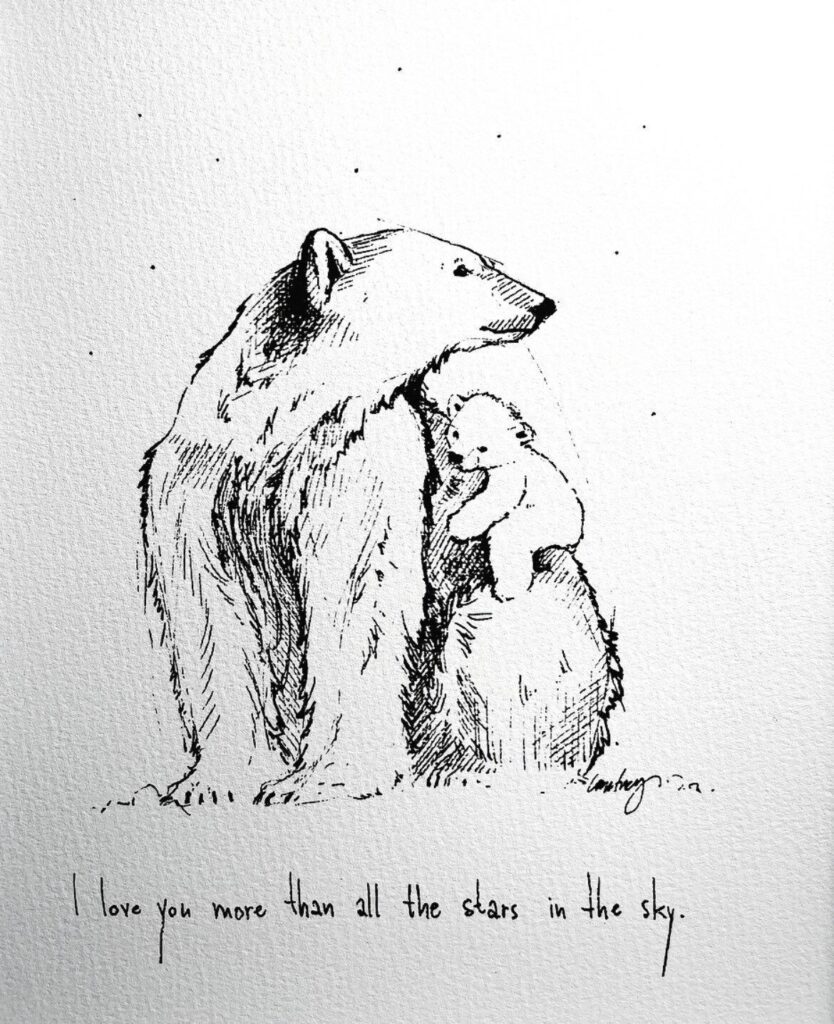
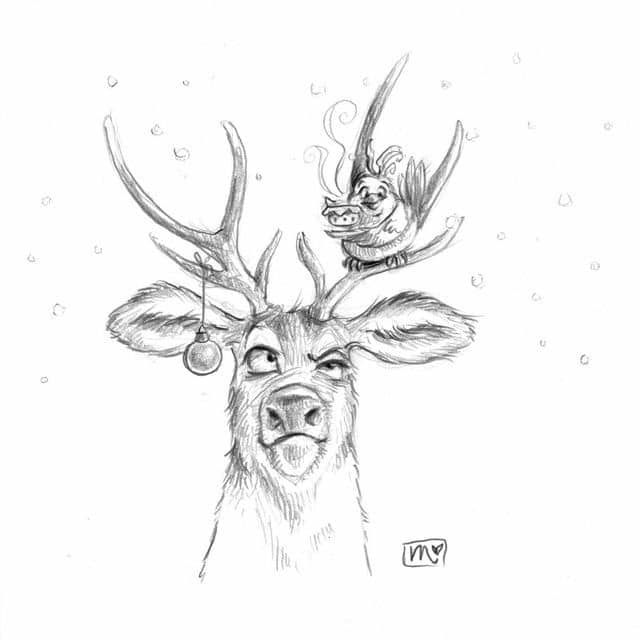
Abstract Interpretations of Winter
Don’t feel tied to realism. Winter’s moods and elements lend themselves beautifully to abstract art.
- Color Palettes: Focus on the cool blues, whites, grays, and silvers of winter, or the warm reds, oranges, and yellows of indoor coziness.
- Textures: Represent the feeling of snow, ice, wool, or steam through lines, patterns, and shading without drawing a specific object.
- Emotions: How does winter make you feel? Express loneliness, peace, joy, or anticipation through abstract shapes and colors.
- Soundscapes: Can you draw the crunch of snow, the howling wind, or the crackle of a fire using visual elements?
Winter Fashion and Accessories
From practical gear to stylish statements, winter fashion provides interesting shapes and textures.
- Scarves, Hats, and Mittens: Focus on the folds, knits, and fuzziness of these items.
- Coats and Jackets: Explore different silhouettes and materials, from puffy down jackets to tailored wool coats.
- Winter Boots: Capture the rugged textures of leather or suede, and the practical designs.
- Layered Outfits: Drawing figures dressed in multiple layers can be a great way to practice drapery and form. This could even inspire your own sense of style, much like the general principles of art ideas can inspire various forms of creative expression.
Bringing Warmth to Your Art: Color, Texture, and Light
Even when drawing cold subjects, you can infuse your art with a sense of warmth and inviting atmosphere.
Choosing Your Winter Color Palette
While winter often brings to mind cool blues and stark whites, don’t be afraid to broaden your palette.
- Cool Tones with Warm Accents: Use varying shades of blue, grey, and white for snow and sky, but introduce pops of warm color – a cardinal red, a glowing lamp yellow, a rich brown fireplace.
- Muted and Desaturated Colors: Winter light often desaturates colors, giving them a softer, more subtle quality. Practice mixing muted tones.
- Warm Interiors: For indoor scenes, lean into oranges, reds, deep greens, and creamy yellows to convey comfort and coziness. Consider how elements like candles, textiles, and specific color choices in decor contribute to a harmonious atmosphere; exploring aesthetics in the details: candles, textiles, colors can provide great insights.


Rendering Textures: From Fluffy Snow to Rough Bark
Texture adds depth and realism to your drawings. Winter is full of diverse textures.
- Snow: Use subtle variations in shading and mark-making to show fluffy fresh snow, icy packed snow, or melting slush.
- Ice: Experiment with smooth, reflective surfaces, sharp edges, and delicate internal cracks.
- Wool/Knitwear: Use small, looping strokes or cross-hatching to suggest the intricate patterns of knitted fabrics.
- Wood: Different types of wood – rough bark, smooth polished wood, splintered logs – each require distinct drawing techniques.
- Fire: Capturing the flickering, translucent quality of flames requires layering and blending colors.
Mastering Light and Shadow in Winter Scenes
Winter light has a unique quality that can dramatically impact your drawings.
- Soft, Diffused Light: Overcast winter days often produce soft, even lighting with subtle shadows. This is great for creating a calm, atmospheric mood.
- Harsh, Low-Angle Light: When the sun does appear, it’s often low in the sky, creating long, dramatic shadows and strong contrasts, especially in snow.
- Warm Interior Glow: Practice drawing light emanating from a fireplace, lamps, or candles, casting warm pools of light and soft shadows in an otherwise dim room.
- Reflections: Snow and ice are highly reflective. Pay attention to how objects reflect onto these surfaces, adding realism and interest.

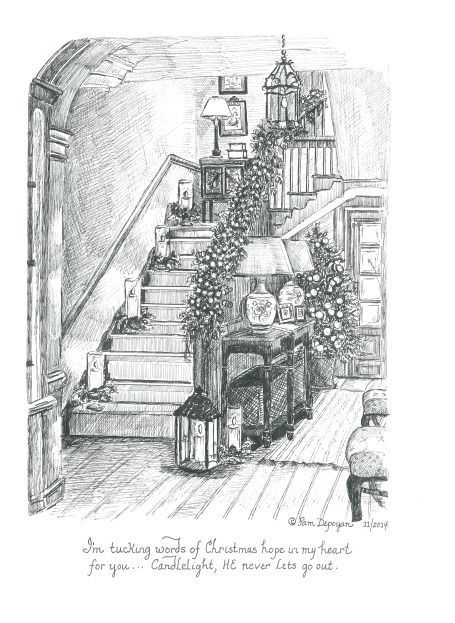
Making It Your Own: Personalizing Your Drawings
Art is about personal expression. Don’t just copy; infuse your winter drawings with your unique perspective.
Adding Narrative Elements
A drawing can tell a story. Think about what’s happening, or what could happen, in your scene.
- Characters: Add a small figure walking through a snowy park, a child building a snowman, or a pair of mittens left on a bench.
- Activity: Show smoke curling from a chimney, footprints leading into the distance, or a window light illuminating a person reading.
- Emotion: Does your drawing convey peace, loneliness, excitement, or wonder? Use colors, composition, and details to evoke a specific feeling.
Experimenting with Styles
Your drawing style is as unique as your fingerprint.
- Realistic: Strive for accuracy in proportion, light, and shadow.
- Cartoony/Whimsical: Embrace exaggerated features, bright colors, and playful themes.
- Illustrative: Combine elements of realism with stylized details, often telling a clear story.
- Abstract/Impressionistic: Focus on capturing the feeling or mood of winter rather than precise representation. Don’t be afraid to try different techniques; sometimes the best art ideas come from breaking conventions.
Incorporating Personal Touches
- Memory Lane: Draw a winter scene from your childhood, a cherished holiday memory, or a favorite winter activity.
- Imagined Worlds: Create a fantastical winter wonderland that exists only in your mind.
- Personal Objects: Include your own favorite mug, a specific blanket, or a beloved pet in your cozy interior drawings. These personal elements add authenticity and connection to your work.
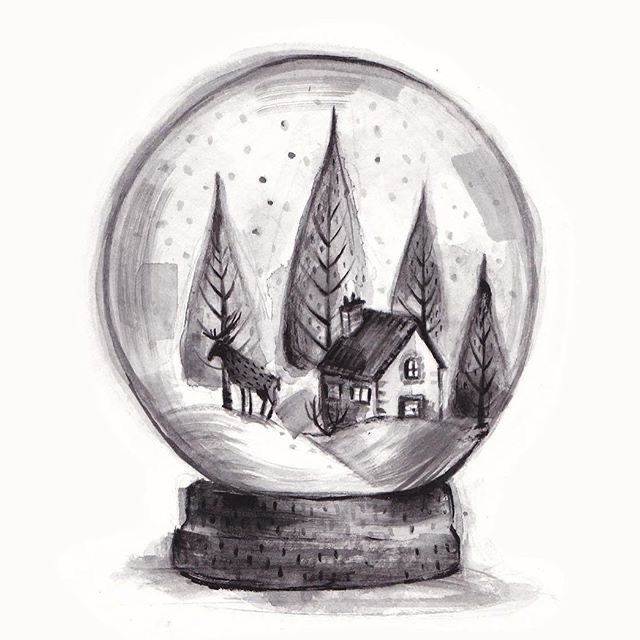

Digital Drawing in Winter: Modern Creative Tools
While traditional mediums are wonderful, digital tools offer a fantastic alternative for winter drawing, especially when it’s too cold to venture outside with a physical sketchbook.
Benefits of Digital Art for Winter
- Cleanliness: No messy paints or scattered pencils, perfect for drawing on the couch.
- Portability: Take your entire art studio with you anywhere in your home, or even to a cozy café.
- Experimentation: Easily undo mistakes, try out different colors, and experiment with layers without wasting paper or paint.
- Variety of Brushes: Digital art software offers an endless array of brushes that can mimic traditional mediums like watercolor, charcoal, or oil paint.
Essential Digital Tools
- Tablet and Stylus: An iPad with an Apple Pencil, a Wacom tablet, or a Samsung Galaxy Tab are popular choices. The right tools can make a huge difference in your digital art journey; consider investing in quality accessories like the best iPad case and pen for creatives.
- Drawing Software: Procreate (iPad), Adobe Photoshop/Fresco, Clip Studio Paint, and Krita are excellent options, each with its own strengths.
- Online Resources: Many tutorials are available online to help you learn digital drawing techniques, from beginners to advanced artists.
Digital Winter Art Ideas
- Animated Snowflakes: Use simple animation features in your software to make snowflakes gently fall.
- Glowing Winter Scenes: Digital tools excel at creating luminous effects, perfect for frosty window lights or sparkling snow.
- Digital Paintings: Mimic oil or acrylic paintings of winter landscapes, taking advantage of blend modes and brush textures.
- Concept Art: Design whimsical winter creatures or fantastical ice kingdoms.


Overcoming Creative Blocks in the Cold
Even the most inspired artists face creative blocks. Winter’s introspective mood can sometimes lead to artistic stagnation, but there are plenty of ways to shake off the creative chill.
Seek Inspiration Beyond the Obvious
- Look at Other Art: Browse art books, visit online galleries, or explore platforms like Pinterest and Instagram for diverse art styles and ideas.
- Nature Walks (Bundled Up!): Even a short walk in crisp winter air can clear your head and provide fresh perspectives. Pay attention to the subtle changes in nature.
- Movies and Books: Watch a film set in winter or read a book that evokes a strong sense of the season. Let the storytelling ignite your imagination.
- Music: Listen to music that matches the mood you want to create – peaceful, dramatic, joyful, or melancholic.
Try New Techniques or Materials
Sometimes a block means you’re just bored with your usual routine.
- Switch Mediums: If you usually draw with pencil, try watercolors or pastels. If you’re a digital artist, try some traditional sketching.
- Experiment with Style: Try drawing your usual subjects in a completely different style (e.g., realistic instead of cartoony, or abstract instead of representational).
- Time Limits: Give yourself a short time limit (e.g., 5-10 minutes) for a sketch. This takes away the pressure to create something perfect and encourages spontaneity.
- Drawing Prompts: Use online drawing prompts or a winter-themed random word generator to spark new ideas. For example, “fireplace + cat + cozy blanket” or “frozen pond + ice skater + moonlight.”
Give Yourself Permission to Play
- Don’t Aim for Perfection: The biggest block often comes from fear of failure. Remind yourself that practice is key, and not every drawing needs to be a masterpiece. Some of the most valuable learning comes from less-than-perfect attempts.
- Doodle Freely: Just let your hand move without a specific goal. Sometimes, a random doodle can evolve into a fantastic idea.
- Take a Break: Step away from your art for a few hours or even a day. Engage in a different activity. A fresh perspective can work wonders when you return.
- Connect with Others: Share your work with a trusted friend or join an online art community. Getting feedback or simply seeing what others are creating can be incredibly motivating.
Sharing Your Winter Masterpieces
Once you’ve poured your creativity into your winter drawings, don’t let them gather dust in a sketchbook. Sharing your art can be a rewarding experience.
Online Art Communities and Social Media
- Instagram/TikTok: Use relevant hashtags like #winterart, #cozydrawing, #seasonalart, #sketchbook, and #artinspiration to reach a wider audience. Share your process, not just the finished piece.
- DeviantArt/ArtStation: Platforms dedicated to digital and traditional art where you can showcase your portfolio and connect with other artists.
- Reddit Art Communities: Subreddits like r/drawing or r/art can be welcoming places to share your work and get feedback.
Local Art Shows and Craft Fairs
- Community Events: Many towns host local art shows or craft fairs, especially around the holidays. This can be a great way to display your work, sell prints, and meet other local artists.
- Small Businesses: Some local cafes or shops might be open to displaying local artists’ work. It’s always worth asking!
Gifting Your Art
- Handmade Gifts: Your winter drawings can make incredibly thoughtful and personalized gifts for friends and family. Frame a favorite piece, or turn it into a custom greeting card or calendar.
- Digital Prints: If you’ve created digital art, you can easily print it on various materials, from high-quality paper to mugs or textiles.
Sharing your art isn’t about seeking validation; it’s about connecting with others, inspiring them, and celebrating your own creative journey. The act of putting your art out into the world can be a powerful motivator for continued growth and exploration.
Conclusion
Winter, with its unique blend of stillness and festive energy, offers an unparalleled canvas for artistic expression. From the tranquil beauty of a snow-laden forest to the warm glow of a cozy interior, the season provides endless art ideas waiting to be brought to life. We’ve explored classic winter scenes, delved into holiday cheer, and even ventured into unique and abstract interpretations. We’ve talked about essential tools, setting up your creative space, and how to embrace both traditional and digital mediums.
Remember, the goal isn’t just to create a perfect drawing, but to enjoy the process. Let your pencil dance across the page, experiment with colors and textures, and allow the quiet magic of winter to guide your hand. Drawing is a journey of discovery, a path to mindfulness, and a wonderful way to connect with the world around you, even when you’re bundled up indoors.
So, as the winter winds blow and the snow begins to fall, don’t let the cold keep your creativity on ice. Grab your favorite drawing tools, find your coziest spot, and let your imagination take flight. Whether you’re sketching a tiny snowflake or a grand winter landscape, every line you draw is a step into a richer, more vibrant season. Happy drawing!
Why is winter considered an ideal season for drawing?
Winter’s natural light, intricate ice and snow patterns, and the nostalgic atmosphere create a contemplative mood that inspires artistic expression and allows artists to capture the season’s unique beauty.
What indoor activities can enhance my winter drawing experience?
Creating a cozy, well-organized space with good lighting, comfortable furniture, and inspiring decor can foster focus and enhance your indoor drawing sessions, especially since colder temperatures keep you indoors.
What essential art supplies should I have for winter drawing?
A basic set of drawing tools includes a quality sketchbook, a variety of graphite pencils, erasers, fineliner pens, coloring mediums like colored pencils or watercolors, and reference materials such as photos or real objects.
- 522shares
- Facebook0
- Pinterest522
- Twitter0

